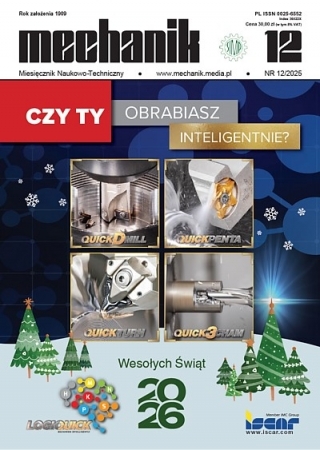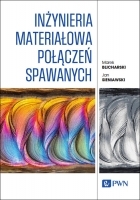Stanowisko badawcze do prowadzenia badań w aspekcie symulowania wrażenia dotyku *
The Position for experimental research to simulate sense of touch
Mechanik nr 07/2016 - XX Międzynarodowa Szkoła Komputerowego Wspomagania Projektowania, Wytwarzania i Eksploatacji
STRESZCZENIE: W artykule przedstawiono stanowisko badawcze do porównania dwóch metod symulowania wrażenia dotyku. Opisano główne elementy składowe tego stanowiska, a w szczególności symulator wyposażony w rzeczywisty i wirtualny pulpit sterowniczy oraz rękawicę z siłowym sprzężeniem zwrotnym. Przeprowadzone badania na tym stanowisku pozwolą na uzyskanie odpowiedzi, która z metod symulowania wrażenia dotyku wpływa na większy realizm podczas prowadzenia czynności sterowniczych związanych z symulacją procesu skrawania.
SŁOWA KLUCZOWE: symulator, wrażenie dotyku, rzeczywistość wirtualna (VR)
ABSTRACT: The article presents a research position designed to comparative research on two methods of haptic simulation. Main elements of the position were described, especially a simulator equipped with real as well as virtual steering panels and a cyber glove. Research conducted and the position will allow an answer to a question of which of the methods of haptic simulation impacts more realism to conducting steering activities connected with simulation of the process of machining.
KEYWORDS: simulator, sense of touch, virtual reality (VR)
BIBLIOGRAFIA / BIBLIOGRAPHY:
- Kalwasiński D. „Opracowanie komputerowego narzędzia do interaktywnego odwzorowania zdarzeń wypadkowych podczas użytkowania suwnic” (Development of computer tool for interactive simulation of accident situations occurring during overhead crane operation), Mechanik nr 7/2012, s. 317÷324 [CD].
- Juang J.R., Hung W.H., Kang S.C. “SimCrane 3D: A crane simulator with kinesthetic and stereoscopic vision”, Advanced Engineering Informatics 27/2013, s. 506÷518.
- Kalwasiński D., “Praktyczny test symulatora suwnicy w aspekcie symulacji wrażenia dotyku”, Mechanik 7/2014, s. 285÷294 [CD], www.mechanik.media.pl/archiwum.html
- Zhou J., Shen X., Liu D., “Modeling and Simulation for Electric Vehicle Powertrain Controls”, ITEC Asia – Pacific 2014, pp. 1÷4.
- “Immersive Technologies, Simulation Delivering Safety & Productivity, Caterpillar 24m Graders”, 20.11.2013, – brochure, http://www.immersivetechnologies.com.
- Segura A., Moreno A., Brunetti G. and Henn T. “Interaction and Ergonomics Issues in the Development of a Mixed Reality Construction Machinery Simulator for Safety Training”, Proceedings of Ergonomics and Health Aspects, HCI International 2007, LNCS4566, ISBN 978-3-540-73738-4, s. 290÷299.
- Myrcha K., Skoniecki A., Kalwasiński D. “Symulacja zagrożeń wypadkowych w transporcie wewnątrz zakładowym z zastosowaniem VR” (Interactive simulation of accidents risk in transport using the technique of virtual reality VR), Przegląd Mechaniczny nr 11/2004, s. 32÷34.
- Saulewicz A., Myrcha K., Kalwasiński D. “Stosowanie wirtualnego symulatora podnośnikowego wózka widłowego do szkolenia operatorów” (Application of virtual forklift simulator for the training of the operators), X Szkoła Komputerowego Wspomagania Projektowania, Wytwarzania i Eksploatacji, WAT, Jurata, 05.2006, s. 223÷230.
- Kalwasiński D., Myrcha K. “Środowisko wirtualne dla potrzeb interaktywnej symulacji obsługi tokarki” (Virtual environment for interactive simulation of lathe operation), Mechanik 7/2010, s. 187÷194 [CD].
- Lin F., Ye L., Duffy V. G., Su C.-J., “Developing virtual environments for industrial training”, Elsevier Information Sciences, No. 140, 2002, pp. 153÷170.
- Chambers T. L., Aglawe A., Reiners D., White S., Borst Ch. W., Bajpayee A. “Real-time simulation for a virtual reality-based MIG welding training system”, Virtual Reality, 2012, Vol. 16, Iss. 1, pp. 45÷55.
- Huang J. Y. “An Omnidirectional Stroll-Based Virtual Reality Interface and Its Application on Overhead Crane Training”, Ieee Transactions on Multimedia, Vol. 5, No. 1, 03.2003, pp. 39÷51.
- Hayward V., Astley O. R., Cruz-Hernandez M., Grant D. and Robles- De-La-Torre G. “Haptic interfaces and Devices”, Sensor Review, Vol. 24, No. 1, 2004, pp. 16÷29.
- Lécuyer A., Burkhardt J.-M., Le Biller J., Congedo M. “A Technique to Improve Perception of Contacts with Under-Actuated Haptic Devices in Virtual Reality”, Proceedings of the First Joint Eurohaptics Conference and Symposium on Haptic Interfaces for Virtual Environment and Teleoperator Systems, 2005, pp. 316÷322, ISBN 0-7695-2310-2.
- Zhou Z., Wan H., Gao S.&Peng Q., “A Realistic Force Rendering Algorithm for CyberGrasp”, Computer Aided Design and Computer Graphics, 9th International Conference, 2005, pp.6, ISBN: 0-7695-2473-7.
- Coxworth B., “Dexmo exoskeleton-for-the-hand gives computer interfacing the finger(s)”, 24 October 2014, http://www.gizmag.com/dexta-robotics-dexmo-hand-exoskeleton/34410/
- Endo T., Kawasaki H. “Force Perception of Human Finger Using a Multi-Fingered Haptic Interface”, Chapter 16 in book R. Balasubramanian and V. J. Santos (eds.), “The Human as an Inspiration for Robot Hand Development”, Springer tracts in Advenced Robotics 95. Springer International Publishing 2014, pp. 345÷361, DOI 10.1007/978-3-319-03017-3_16
- Bouzit M., Popescu G., Burdea G. and Boian R. “The Rutgers Master II-ND Force Feedback Glove”, in proc. 10th Symposium on Haptic Interfaces for Virtual Environment and Teleoperator Systems, 2002. HAPTICS 2002, pp. 145÷152, ISBN 0-7695-1489-8.
- Kalwasiński D. “Koncepcja badania symulacji wrażenia dotyku wirtualnych obiektów z wykorzystaniem techniki VR”, (Concept research on simulation of sense of haptics using VR technology), Mechanik 7/2015, s. 395÷402 [CD], DOI: 10.17814/mechanik.2015.7.253 www.mechanik.media.pl/archiwum.html























